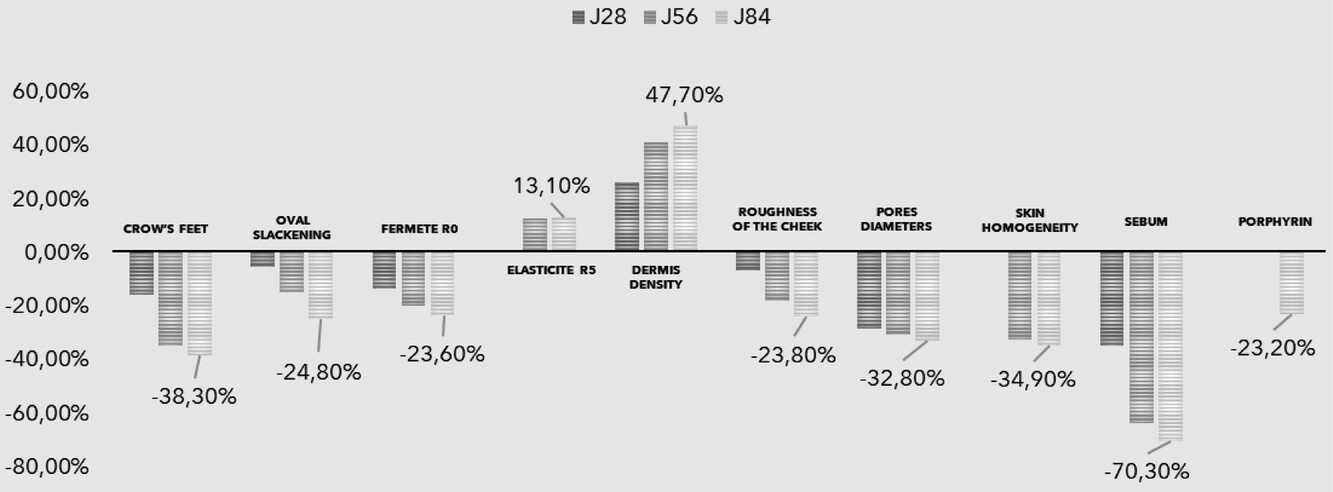I’m not sure if my opinion is qualified, but such as it is, it’s that 1) t’s hard to argue with results 2) the people drumming up that fear are mostly cosmetic surgeons who have a vested interest in their clientele opting for face lifts instead 3) using more frequent treatments at home with lower powered devices compared to a series of 3-5 treatments at a professional spa with higher settings mitigates this risk.
So when I see my skin improving over time, I don’t know that it matters what kind of collagen it is under the microscope. I supplement with oral hyaluronic acid and collagen peptides and typically take a bunch of supplements at least some of which are dedicated to skin health, as I think what you feed your skin while it’s undergoing rebuilding matters. For me personally, since I have no interest in ever going under the knife, there’s no other alternatives between doing nothing and doing this (i.e., at home interventions) just works. I won’t give up a clear concrete benefit I feel and see for a hypothetical risk that doesn’t quite add up to me.
The most vocal naysayers seem to be plastic surgeons. I don’t like the results of plastic surgery so if that’s the alternative to this “disorganized” collagen I prefer what I’m getting. But think for a minute what the incentives are of that kind of critic. Their procedures cost $10-50k on average and are largely becoming obviated by non surgical treatments that cost much less in an in-office setting and a fraction even of that when done at home.
When I have bought devices in the past, for both cost and safety I have opted for a tier below professional grade. For example, my RF microneedling device has lower wattage and more superficial needles than Morpheus 8. That means each treatment causes less damage, less inflammation, and more subtle results than if it had been via Morpheus 8. And this suits me just fine. If I were a salon owner and needed to charge my patients $1500 or so for a package of 4 treatments of course I’d go with something that packs maximum punch. But since I can just repeat the treatment at home every 4 weeks and not worry about impressing a client who would otherwise wish she had her money back, I can go slower and gentler for — what I think — are better cumulative results with less trauma to the skin each time. With Tixel it’s less clear how you achieve that other than opting for a less ablative setting each time.
This is my personal calculus of cost benefit and to each their own but it works for me. It might help that my skin is in naturally excellent shape — it was starting to degrade for a couple of years due to the toll stress was taking on my body but the baseline was high and it’s easier to maintain than to correct issues. For that I’ve got genetics and skin type in my favor (white but from the Mediterranean, not prone to sun damage) and a history of proactive treatment. If someone comes from a lower baseline I actually think he will experience greater improvement faster, but still might not reach anything close to perfection and might still want to consider if surgery is desirable down the road — which COULD complicate this calculus, as it’s my understanding that “scar tissue” could possibly interfere with a surgical procedure. So again, to each his own.
Last but not least, I’m huge on adjunct therapies that give results without trauma — supplements I already mentioned, but a red and infrared light panel is king, a plasma pen with non ablative tip treatments, sauna use, Q Switch ND Yag laser, facial EMS device… all these things help round out and improve results. It depends on how much time you’ve got on your hands to dabble. For me it’s about incorporating them into a calendar that I follow for self care — nothing encourages consistency more than seeing results. I’d like to incorporate mesotherapy down the road but so far my schedule is saturated.
Best of luck with whatever decision you make!
